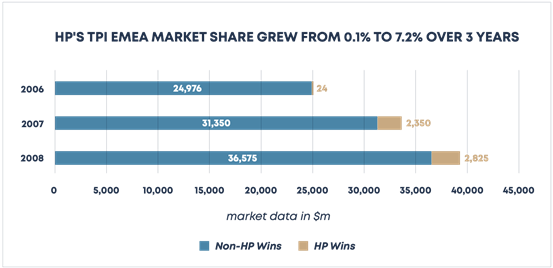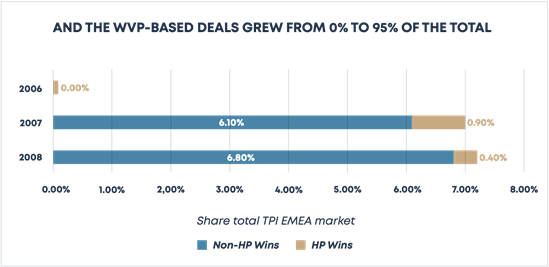The first published evidence that linked the positive values to sales performance was in 2008.
The article described was achieved by HP’s large deal pursuit teams developing sales strategies
on live deals, exploring ways to operationalize the mindsets in a programme called Winning Value Propositions WVP.



